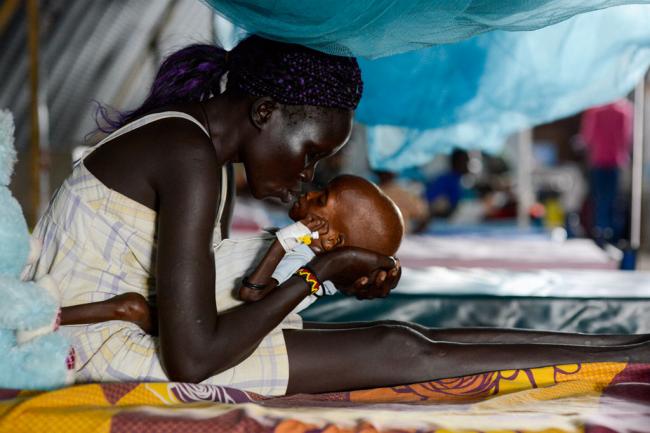
‘Massive scale-up’ needed if global targets on tuberculosis are to be met – top UN health official
“We face an uphill battle to reach the global targets for tuberculosis,” said Director-General of the UN World Health Organization (WHO) Dr. Margaret Chan in a news release on Thursday that also announced the launch of the agency’s 2016 Global Tuberculosis Report.
“There must be a massive scale-up of efforts, or countries will continue to run behind this deadly epidemic and these ambitious goals will be missed,” she added, referring to targets to reduce tuberculosis (TB) deaths by 90 per cent and its cases by 80 per cent by 2030, compared with 2015.
These targets were agreed by countries both at the World Health Assembly, the highest governing body of the WHO, as well as in the Sustainable Development Goals (SDGs).
In one of its targets, (SDG3) specifically calls for ending the epidemic of tuberculosis (TB) by 2030.
According to the Global Tuberculosis Report, though response efforts have saved more than three million lives in 2015, the overall burden of the disease is actually higher than previously estimated, primarily based on new survey data from India. Last year, there were an estimated 10.4 million new cases worldwide and six countries (India, followed by Indonesia, China, Nigeria, Pakistan and South Africa) accounted for 60 per cent of the total number.
An estimated 1.8 million people died from TB last year, of whom about 400,000 were co-infected with HIV. Even though global TB deaths fell by 22 per cent between 2000 and 2015, the disease was one of the top 10 causes of death worldwide in 2015, responsible for more deaths than HIV and malaria, noted the news release.
Challenges in reporting and treating tuberculosis
The Report also revealed that gaps in testing for TB and reporting new cases remain major challenges with only 6.1 million of the estimated 10.4 million new cases detected and officially notified in 2015, leaving a gap of 4.3 million.
“This gap is due to underreporting of TB cases especially in countries with large unregulated private sectors, and under-diagnosis in countries with major barriers to accessing care,” said WHO in the release.
Another major challenge is tackling multidrug-resistant TB (MDR-TB), a condition in which the disease causing organism is resistant to at least isoniazid and rifampin, the two most potent TB drugs.
According to the UN health agency this MDR-TB is a public health crisis.
Based on estimates, some 480,000 people contracted MDR-TB in 2015, with India, China and Russia accounting for more than half such cases globally. Additionally, only 1 in 5 of the people newly eligible for second-line treatment were able to access it and global cure rates continue to remain low at about 52 per cent.
“To save more lives now, we must get newly recommended rapid tests, drugs and regimens to those who need them," said Dr. Mario Raviglione, Director of the WHO Global TB Programme, stressing that current actions and investments have fell far short of what is needed. “The world is finally waking up to the threat of antimicrobial resistance – now is the time to accelerate the MDR-TB response,” he emphasized.
In September this year, on the side lines of the UN General Assembly’s high-level segment, global leaders met to discuss the threats posed by anti-microbial resistance and called for urgent and increased attention to curb the spread of infections caused by such “superbugs.”
Challenges in financing
WHO further highlighted that for TB care and prevention, investments in low- and middle-income countries fell almost $2 billion short of the $8.3 billion needed this year.
“This gap will widen to $6 billion by 2020 if current levels of funding are not increased,” it warned noting that almost 84 per cent of the financing available in low- and middle-income countries in 2016 was from domestic sources but this was mostly accounted for by the BRICS (Brazil, the Russian Federation, India, China and South Africa).
Other low- and middle- income countries continue to rely heavily on international donor financing, with more than 75 per cent coming from The Global Fund to Fight AIDS, TB and Malaria, an international financing organization that works for the prevention and treatment of these diseases.
In addition, WHO estimates that at least an extra $1 billion per year is needed to accelerate the development of new vaccines, diagnostics, and medicines.
Photo: UNICEF/Sebastian Rich
Source: www.justearthnews.com
Support Our Journalism
We cannot do without you.. your contribution supports unbiased journalism
IBNS is not driven by any ism- not wokeism, not racism, not skewed secularism, not hyper right-wing or left liberal ideals, nor by any hardline religious beliefs or hyper nationalism. We want to serve you good old objective news, as they are. We do not judge or preach. We let people decide for themselves. We only try to present factual and well-sourced news.







